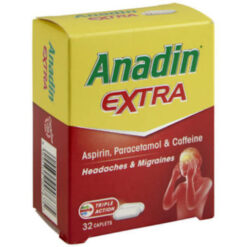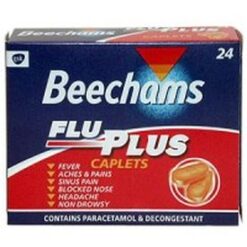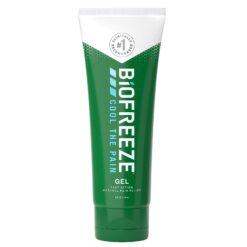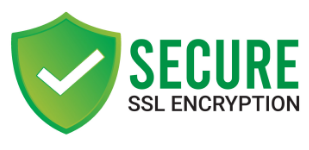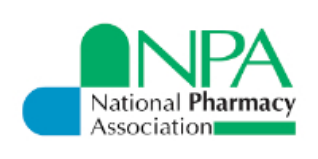-
NHS
-
Oldham Services
-
Shop
-
Help & Advice
Pain is the unpleasant feeling you experience when a part of your body is hurt or ill. Pain is a signal in your body indicating that something may be wrong. You can feel pain like a prick, burn, sting, tingling, throbbing or ache. The nature of Pain can be sharp or dull, continuous, or intermittent.
Pain is more than just a feeling of irritation and discomfort. Managing pain is key to improving the well-being of a person. Pain keeps people from doing their everyday tasks and things they enjoy. It may also lead to mental conditions like depression, restlessness, insomnia and anxiety. Pain can also increase blood pressure and heart rate and can negatively affect healing. But, on the other hand, managing the pain helps ease the suffering. So, the amount of pain you experience can tell your doctor a lot about your overall health.
Pain management is mainly done with medicine. Pain medicine works best when it’s used consistently and on a schedule. You may change the doses to ensure the most effectiveness. Over-the-counter (OTC) medicines are suitable for many types of pain. Aspirin, naproxen, Paracetamol and ibuprofen etc., are a few examples of pain-relieving medications. other methods of relieving pain:
The WHO analgesic ladder was designed by the World Health Organization (WHO) in 1986 to provide adequate pain relief for cancer patients. This analgesic path, developed through the recommendations of an international group of experts. This analgesic ladder has undergone several modifications over the years. It is currently applied for managing cancer pain and acute and chronic non-cancer conditions causing pain due to a broader spectrum of diseases such as gastrointestinal pain, degenerative disorders, musculoskeletal diseases, and other chronic and acute pain types.
The analgesic ladder originally consisted of three steps:
For many people, a saltwater rinse is an effective first-line treatment. Saltwater is a natural antiseptic, and it can help dislodge the food particles and debris that may be stuck in between your teeth that may become the source of nutrition for growing bacteria. To use this approach, mix 1/2 teaspoon (tsp) of salt into a glass of warm water and use it as a mouthwash.
Cold compress
A cold compress can relieve any pain you’re experiencing, primarily if any trauma has caused the tooth pain.
When you apply a cold compress on the affected area, it causes the blood vessels to constrict, hence decreasing the sense of pain.
To use this approach, hold a towel-wrapped bag of ice to the affected area for 20 minutes at a time. You can repeat this every few hours.
Clove
The main compound in clove is eugenol. It is a natural antiseptic and helps to reduce tooth pain.
Hydrogen peroxide
Rinsing with hydrogen peroxide mouthwash helps to reduce plaque and symptoms of periodontitis.
Swish the solution in the mouth, but do not swallow it. This remedy is not recommended for children, as there is a risk of accidental solution ingestion.
Thyme
Thyme has powerful antibacterial and antioxidant properties trusted source that can help to treat toothaches. It can even help fight bacteria that contribute to tooth decay.
See a dentist
If your toothache is severe or the result of a more serious medical condition, it’s crucial that you see your dentist. Many toothaches will require medical attention. An over-the-counter pain reliever such as ibuprofen, Paracetamol, co-codamol etc., could help until you see a dentist.
Ice and Heat treatment
Regular applications of ice to the painful areas of your back may help reduce pain and inflammation.
Physiotherapy
Physiotherapists can teach you how to stand, sit, and maintain a posture that keeps your spine in a proper position and alleviates strain on your back. They also can teach you various exercises that target your back and strengthen the core muscles that support your back.
Massage
One weekly massage over ten weeks improved pain and functioning for people with chronic back pain.
Pain controlling Spinal injections
A doctor may suggest treatment through spinal injection to help reduce your back pain where pain-relieving medications are directly injected in the spine.
Pain Medication
Talk to your doctor before taking any pain relievers. Don’t expect medication alone to solve your pain problem; the underlying disease needs to be treated to eliminate the pain completely.
Sleeping with correct posture
When you have back pain, you can suspect that your sleeping position is incorrect. The pain may cause a lack of sleep. It can be a vicious cycle because your back pain may worsen when you don’t get enough sleep.
Medications
The types of drugs that doctors might prescribe for sciatica pain include Anti-inflammatories, Muscle relaxants, opioid based treatments, Antidepressants, Anti-seizure medications.
Physical therapy
Physical therapy can help you correct abnormal posture or strengthen the muscles that support your back. The physiotherapist may create an exercise schedule, including stretching techniques, that you can do at home.
Acupuncture
Acupuncture is a form of treatment that involves inserting thin needles through a person’s skin at specific points on the body to various depths inside the skin.
Steroid Injections
Steroid injections help to reduce pain by suppressing inflammation around the irritated nerve. The effect of steroids usually wears off in a few months.
Surgery
Surgery is usually the last resort and reserved for when the compressed nerve causes significant weakness, extreme pain that progressively worsens or doesn’t improve with other therapies, loss of bowel or bladder control.
Drink Milk
Milk neutralizes the acid produced by the stomach and alleviates the pain.
Try over-the-counter medications
If you have a gas problem or acidity that you think is causing your stomach pain, take an over-the-counter anti-gas / heartburn medication such as Gaviscon, omeprazole etc., to improve digestion and reduce pain.
Eat yoghurt
If you deal with constant stomach issues like indigestion and bloating, yoghurt can help keep your digestive system in tip-top shape. Live yoghurt with probiotic has also shown to help
Avoid spicy food and eat healthy
Eat more fruits and vegetables, whole grains and dry fruits, and start your day with a high-fibre cereal.
Drink some peppermint because it has anti spasmodic properties. It has been shown to relax the muscles in the stomach.
Use a heat patch
Using a heated patch on your belly can help relax the muscles around your uterus. It’s these muscles that cause period cramps. Heat can also boost circulation around your uterus, which can reduce pain. Electric heating pads and hot water bottles are alternatives to heat patches but aren’t as convenient as heat patches.
Take pain-relieving medicines
OTC pain relievers like ibuprofen, naproxen, and aspirin are some effective medicines for period cramps.
Low-intensity exercise and yoga
Low-intensity aerobic exercise can help reduce pain caused by period cramps because it has a physical component and a relaxation component that work against the cramps.
Massage your belly with essential oils
Some essential oils like lavender oil can help ease period cramps when massaged onto the abdomen, primarily when used in a blend of oils.
Heat therapy
The heat helps to relax tense muscles and soothe a stiff shoulder. In addition, it can help with muscle pain and arthritis in the shoulder. Use a heated gel pack, heating pad or hot water bottle.
Shoulder exercises and stretching
Regular exercises and stretching can keep your shoulder strong and flexible. In addition, these exercises help with relaxing and releasing any tension in your shoulders and anywhere else you feel tightness.
Muscle relaxants
Muscle relaxants benefit in the treatment of pain if you have muscle tension or spasms around the shoulder joint. Common muscle relaxants include cyclobenzaprine, baclofen and tizanidine. However, you will need a prescription from your doctor.
Compression
Wrap the shoulder with an elastic bandage to help reduce swelling and pain. You can use a cold compression bandage or a regular bandage. You can also get a shoulder wrap from your local pharmacy.
Massage with essential oils
It has natural anti-inflammatory properties and thus, helps alleviate joint pain & inflammation. In addition, it eases tense muscles and provides easy movement of the knee joint.
Physiotherapy
Physiotherapy is especially beneficial for knee injuries. The manipulation of muscles, tendons and tissues through stretching and exercising allows the pressure on the knee to be released as the muscles soften and relax.
Knee strap
Knee straps are designed to lift the patella bone and relieve symptoms of pain, inflammation, and discomfort associated with knee pain without reducing blood circulation in that area. It also provides massage to the site, enhances blood circulation and healing.
Medications
Your doctor may prescribe medications to help relieve pain and to treat the conditions causing your knee pain. Anti-inflammatory such as naproxen or ibuprofen have shown to help
Surgery
If all the other measures fail to work, surgery is performed to correct the underlying disease causing pain.
Hot and cold packs
Alternative ice packs followed by heat pack helps to reduce inflammation and improve blood flow.
Besides soothing your muscle pain, your healthcare provider may prescribe various medications to treat the underlying problem:
Muscle relaxants
Muscle relaxants may benefit in treating pain if you have muscle tension or spasms. Common muscle relaxants include cyclobenzaprine, baclofen and tizanidine. However, you will need a prescription from your doctor.
Complementary therapies
Massage, meditation or acupuncture.
Long term untreated pain is a significant health issue. Pain management is mainly done with medicine, and people should speak with their doctor before beginning any pain-relieving medication. This assures that they are safe and will not interact with any other drugs a person is taking.
However, there’s also a range of alternative therapies available to ease chronic pain. For example, interventions like exercise, massage, and yoga, can improve quality of life without causing harmful side effects in the process.
Learn More From The NHS Website
